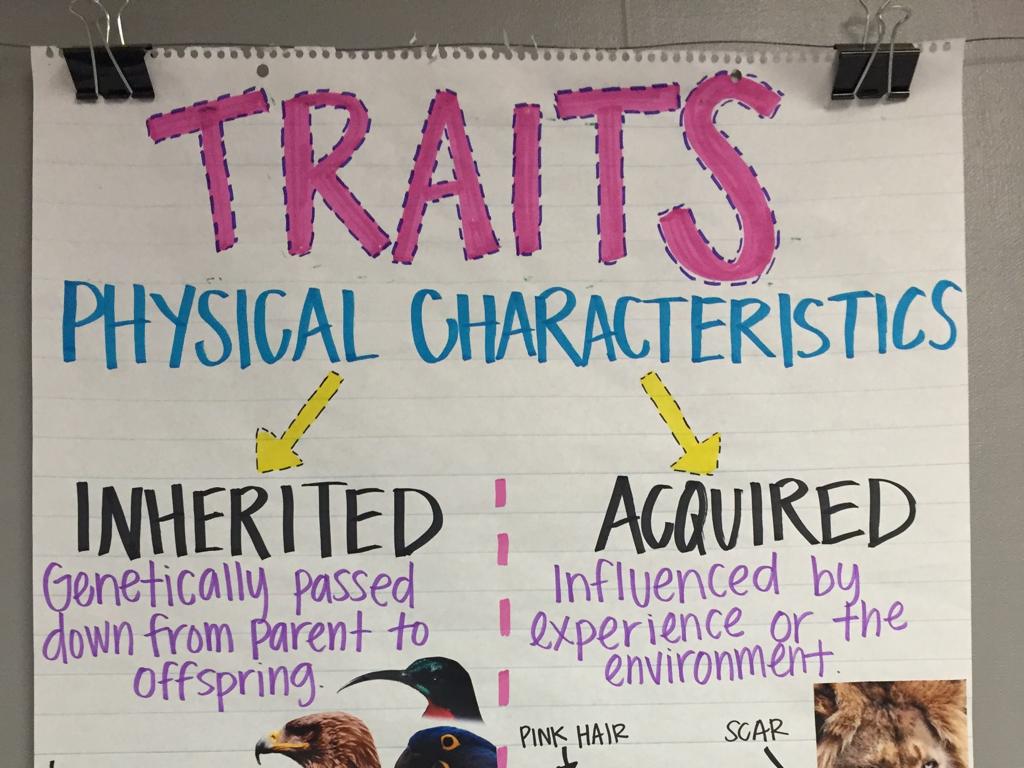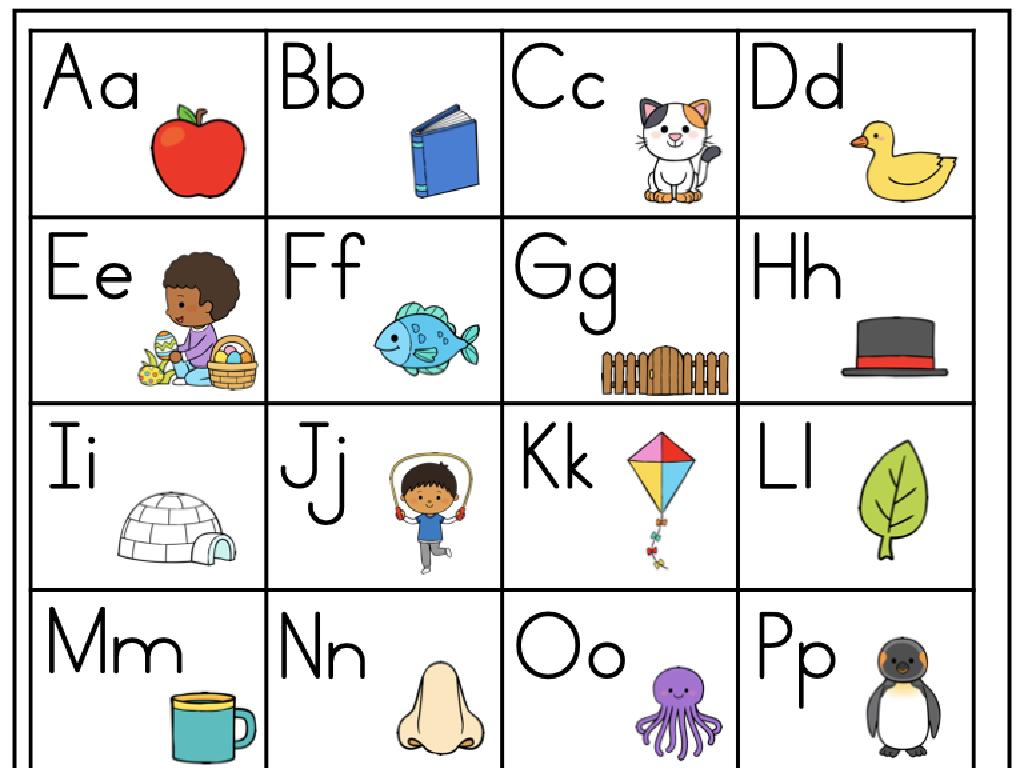Multi-Step Word Problems Involving Remainders
Subject: Math
Grade: Fourth grade
Topic: Multi-Step Word Problems
Please LOG IN to download the presentation. Access is available to registered users only.
View More Content
Solving Mysteries with Remainders
– Multi-step problems explained
– A problem with more than one step to find the solution.
– Significance of remainders
– Remainders tell us what’s left after division.
– Strategies to tackle remainders
– Use estimation and check with division.
– Practice problem walkthrough
– Let’s solve a sample problem together!
|
Today’s lesson is about understanding and solving multi-step word problems that involve remainders. Begin by explaining what multi-step problems are and how they require a series of calculations to reach a solution. Emphasize the importance of remainders in real-life scenarios, such as dividing objects among a group and determining what’s left. Teach strategies for dealing with remainders, including estimation and checking work with division. Conclude with a guided practice problem where students can apply what they’ve learned. Encourage students to explain their reasoning and the steps they take to solve the problem.
Understanding Multi-Step Word Problems
– Definition of multi-step problems
– Problems requiring several calculations to find the answer.
– Real-life examples: recipes & toys
– Following a recipe involves steps like measuring, mixing, baking. Building a toy may involve assembling parts in order.
– Strategies: careful reading
– Read the problem several times to understand what is being asked.
– Strategies: planning steps
– Write down the steps needed to solve the problem before starting calculations.
|
This slide introduces students to the concept of multi-step word problems, which are common in real life and require a series of calculations to solve. Use relatable examples like following a recipe or building a toy to illustrate the concept. Emphasize the importance of reading the problem carefully to understand all the parts and planning out the steps before starting to solve it. This will help students approach complex problems methodically and reduce mistakes. Encourage them to write down the steps as a good practice to organize their thoughts and ensure they don’t miss any important details.
Understanding Remainders in Division
– Division may not fit perfectly
– Leftover numbers are remainders
If 13 cookies are shared among 4 kids, each gets 3 cookies with 1 cookie remaining.
– Remainders show what’s left
Like dividing 13 cookies among 4 kids, not everyone gets the same amount.
– Real-life examples of remainders
When slicing a pizza or sharing candies, sometimes there’s a piece left over.
|
This slide introduces the concept of remainders in division, which occurs when numbers do not divide evenly. The remainder is what is left over after dividing a number as evenly as possible. It’s important for students to understand that remainders are a natural part of division in everyday life. Use relatable examples such as sharing cookies or candies to illustrate this concept. Encourage students to think of remainders as a way to ensure that every part of something is used or shared, even if it doesn’t divide evenly. This understanding will be crucial as they tackle more complex multi-step word problems involving remainders.
Key Words in Multi-Step Division Problems
– Signals for division: ‘share’, ‘distribute’
– Words like ‘per’ or ‘each’ can also indicate division.
– Remainder clues: ‘left over’, ‘remaining’
– Sometimes not everything divides evenly, that’s a remainder.
– Multi-step indicators: ‘then’, ‘after’
– Words like ‘before’ or ‘next’ can signal more steps in a problem.
– Understanding ‘in total’
– ‘In total’ often means you need to add up everything at the end.
|
This slide is aimed at helping students identify key words and phrases that indicate the type of mathematical operation required in multi-step word problems, particularly those involving division and remainders. Emphasize the importance of understanding these cues for successfully solving problems. Provide examples of problems using these keywords to illustrate how they guide the steps needed to find a solution. For instance, ‘If 5 friends share 22 candies, how many does each get and how many are left over?’ This problem uses ‘share’ to signal division and ‘left over’ to indicate a remainder. Encourage students to practice by creating their own word problems using these key words.
Solving Multi-Step Word Problems with Remainders
– Read the problem as a class
– Identify necessary solving steps
– What operations do we use? What are we looking for?
– Solve each step carefully
– Use division for remainders, then use the remainder in the next step
– Check for remainders
– Remainders are parts left over, they can be crucial to the answer
|
This slide is aimed at guiding students through the process of solving multi-step word problems that involve remainders. Start by reading the problem aloud to ensure understanding. Discuss and list the steps needed to solve the problem, which may include addition, subtraction, multiplication, and especially division, as it often results in remainders. Work through each step as a class, paying special attention to division steps that result in remainders. Emphasize the importance of remainders in the context of the problem and how they affect subsequent steps or the final solution. Encourage students to think about why a remainder might be important in real-life situations, such as dividing objects among a group and having some left over. Provide additional practice problems for students to work on individually or in small groups, and be ready to assist them as they apply this step-by-step approach.
Let’s Solve Together: Remainders in Word Problems
– Group problem-solving activity
– Discuss solution strategies
– Are we adding, subtracting, multiplying, or dividing?
– Interpret the remainder’s role
– Does the remainder need to be rounded up, or can it be ignored?
– Apply context to the remainder
– How does the remainder affect the real-world situation?
|
This slide is designed for a collaborative class activity where students will work together to solve a multi-step word problem involving remainders. The teacher will guide the class through the problem, encouraging students to discuss and share different strategies for finding the solution. Emphasis should be placed on understanding the significance of the remainder within the context of the problem. For example, if dividing items among people, what do we do with the leftover items? The teacher should prepare a few example problems with different contexts to illustrate how remainders can be interpreted (e.g., rounding up for people, ignoring for items that can’t be split). The goal is for students to not only solve the problem but also to comprehend the practical implications of remainders in everyday situations.
Practice Time: Solving Word Problems
– Work on problems individually
– Explain your reasoning
– How did you decide what steps to take?
– Share solutions with classmates
– Compare how you solved the problem with a friend
– Discuss different approaches
– Why might another method also work?
|
This slide is designed to facilitate independent practice with multi-step word problems involving remainders. Students should be encouraged to tackle the problems on their own, using strategies learned in class. Emphasize the importance of understanding the process over just getting the right answer. Encourage them to articulate their thought process, which reinforces their learning and helps the teacher assess comprehension. After individual work, create a collaborative environment where students can share their solutions and reasoning. Discussing different methods promotes critical thinking and helps students see the versatility of mathematical problem-solving. Provide guidance and support as needed, and prepare to offer several example problems of varying difficulty to cater to the diverse skill levels within the class.
Class Activity: Remainder Relay
– Teams work on word problems
– Each member solves a step
– Pass the problem to the next
– First team with correct remainder wins!
|
This activity is designed to encourage teamwork and understanding of multi-step word problems involving remainders. Divide the class into small teams, and provide each team with a multi-step word problem. Each student in the team is responsible for solving one part of the problem before passing it on to the next team member. The process continues until the entire problem is solved. The first team to arrive at the correct final answer, including the correct remainder, wins the relay. Ensure that the problems are appropriate for the grade level and that each step is clear. Possible variations of the activity could include different word problems for each team, timed rounds, or a ‘relay race’ where students physically move to a designated area to pass on the problem. This activity not only reinforces the concept of remainders but also promotes collaborative problem-solving skills.
Wrapping Up: Remainders in Multi-Step Problems
– Key takeaways on remainders
– We learned how to solve problems that have more than one step and include remainders.
– Real-life relevance of these skills
– Understanding remainders helps in situations like sharing equally and measuring.
– Homework: Craft a unique word problem
– Use your creativity to make a problem involving division with a remainder.
|
Today, we’ve explored how to tackle multi-step word problems that result in remainders, emphasizing the importance of each step in the process. We discussed how these skills apply to everyday scenarios, such as dividing items among a group and dealing with leftovers. For homework, students are tasked with creating their own word problems, which encourages them to apply their knowledge and think critically about division and remainders. This exercise will help reinforce their understanding and allow them to demonstrate mastery of the concept. In the next class, we’ll review these problems to ensure comprehension and address any challenges the students may have encountered.






